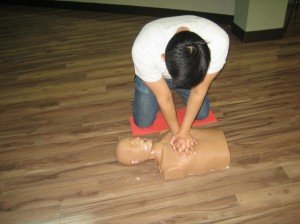HCPs and PALS training

As a health care professional, it is part of your responsibility to be trained well and be updated on the latest skills and techniques in CPR. If you work in a hospital or a similar health care facility, you will be required to have advanced CPR training, based on the Advanced Life Support (ALS) guidelines. The ALS guidelines are created by the American Heart Association in order to provide an in-depth step-by-step process in giving CPR to adult and pediatric victims.
What is difference between Basic Life Support and Advanced Life Support?
Basic Life Support focus on three basic CPR techniques:
- Chest compression. Chest compressions are given at a rate of at least 100 minute. Ratio of compression and ventilation is 30:2 for both children and adults. Remember to push hard and fast in the middle of the chest (at least a third of the anterior-posterior diameter) while allowing for chest recoil.
- Ventilation. Ventilation can be given with a bag valve mask or mouth-to-mouth rescue breaths. Like waiting for the chest to recoil when giving compressions, allow the chest to rise and fall when giving rescue breaths.
- Defibrillation. Giving electric shock to a victim or patient is not as dramatic as seen in TV shows and movies. Defibrillation is given with an AED (automated external defibrillator); it can only be used if the victim has a severe arrythmia, NOT a flat line. AEDs come with two chest pads for adult victims and one pad for pediatric victims.
In addition to these three basic skills, Advanced Life Support focuses on the following as well.
- Medication administration. Medication is an important component of medical management. Drugs such as epinephrine is used during a “code”, a term used by HCPs when a victim goes into cardiac arrest. Different medications are meant to improve the contractility of the heart, lower or raise blood pressure, and manage arrhythmias.
- Medical equipment. Medical equipment like ventilators and other oxygen support devices, drug administration sets and pumps, and other similar equipment are used during and after CPR to help return the spontaneous circulation and respiration of the victim.

About our Pediatric Advanced Life Support training program
The PALS program we offer is completed over several sessions spaced out over 2 days. There is a total of 14 class hours. Re-certification is available for this program as well, for rescuers whose PALS credentials are nearing expiry (certificates are only valid for 2 years). We do not allow rescuers with expired certification to sign up for re-certification; they need to take the PALS program again. PALS re-certification is 6 hours and 20 minutes or 8 hours and 20 minutes long; the difference accounts for optional stations or sessions that the rescuer can choose not to take.
